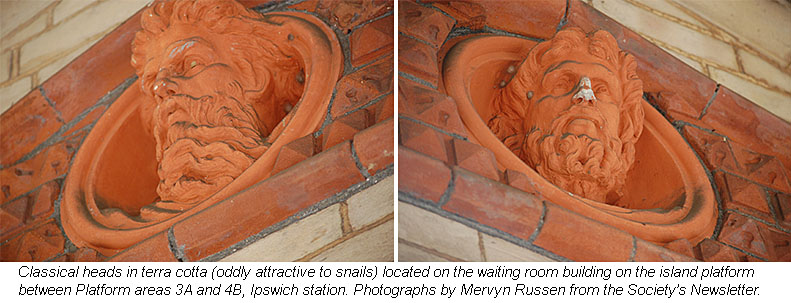- Screen Colours:
- Normal
- Black & Yellow
Ipwich Station, Burrell Road, IP2 8AL
![]()
Ipswich railway station provides a gateway to passengers wishing to use the main line south to London Liverpool Street or possibly north to Norwich.
The Eastern Union Railway (EUR) opened its first terminus in Ipswich, called Ipswich Stoke Hill, in 1846 on Station Road at the other end of the current tunnel, close to the old quay for the steamboats. The Ipswich Steam Navigation Company had been formed in 1824/25 during a period of 'steamship mania' and briefly offered services from the quay between Ipswich and London.
The current station is just to the north of Stoke tunnel, which was constructed by the Ipswich & Bury Railway as part of the Ipswich to Ely Line opening as far as Bury St. Edmunds in late 1846.
The station was rebuilt on its present location in 1860 and the main building was thought to be principally the work of Peter Bruff. Whilst Mr Bruff may have had some input, the actual design was in the Italianate style and submitted by architect Sancton Wood (1816-1886) as part of a competition. When the new station was completed a new road, Princes Street, linking the station to the town also came into use.
 The island platform – todays platforms 3 and 4 – was added in 1883. Many of the original platform buildings exist today and close inspection reveals the heads of what are believed to be Greek Gods incorporated into the design.
The island platform – todays platforms 3 and 4 – was added in 1883. Many of the original platform buildings exist today and close inspection reveals the heads of what are believed to be Greek Gods incorporated into the design.
For the hard-core enthusiast, the Ipswich engine shed (later shed code 32B) opened in 1846 and was at the south end of Stoke tunnel. It was the third-largest shed in the Great Eastern area during the steam era, after those at Stratford and Cambridge.
At the beginning of World War I, soldiers of the Norfolk Yeomanry regiment were deployed to Ipswich to guard key railway bridges in the area. They were relieved by the 9th field company Royal Engineers.
In 1923, the GER amalgamated with other railways to form the London and North Eastern Railway (LNER). In 1948, following nationalisation of the railways, Ipswich became part of the British Railways Eastern Region. Nowadays our railways are privatised and the franchise to run services from Ipswich has passed between several operators.
Stoke Tunnel, the only tunnel on the line, to the south of the station, is well worth a mention. At 361-yard (330 metre) long tunnel was engineered by Peter Bruff. It was completed in 1846 and it is thought to be the earliest tunnel to be built on a sharp continuous curve. During the excavation of the tunnel, many important fossils were discovered, including rhinoceros, lion and mammoth; the site was known as the 'Stoke Bone Beds'. The finds are considered important in understanding climate change during the Ice Age.
[Source: John Norman's Ipswich Icons article.]
Links: Ipswich Station information; Peter Schuyler Bruff (1812-1900); Peter Bruff blue plaque on the Image Archive; Ipswich Historic Lettering website
![]()
![]()
![]()
![]()
![]()
![]()